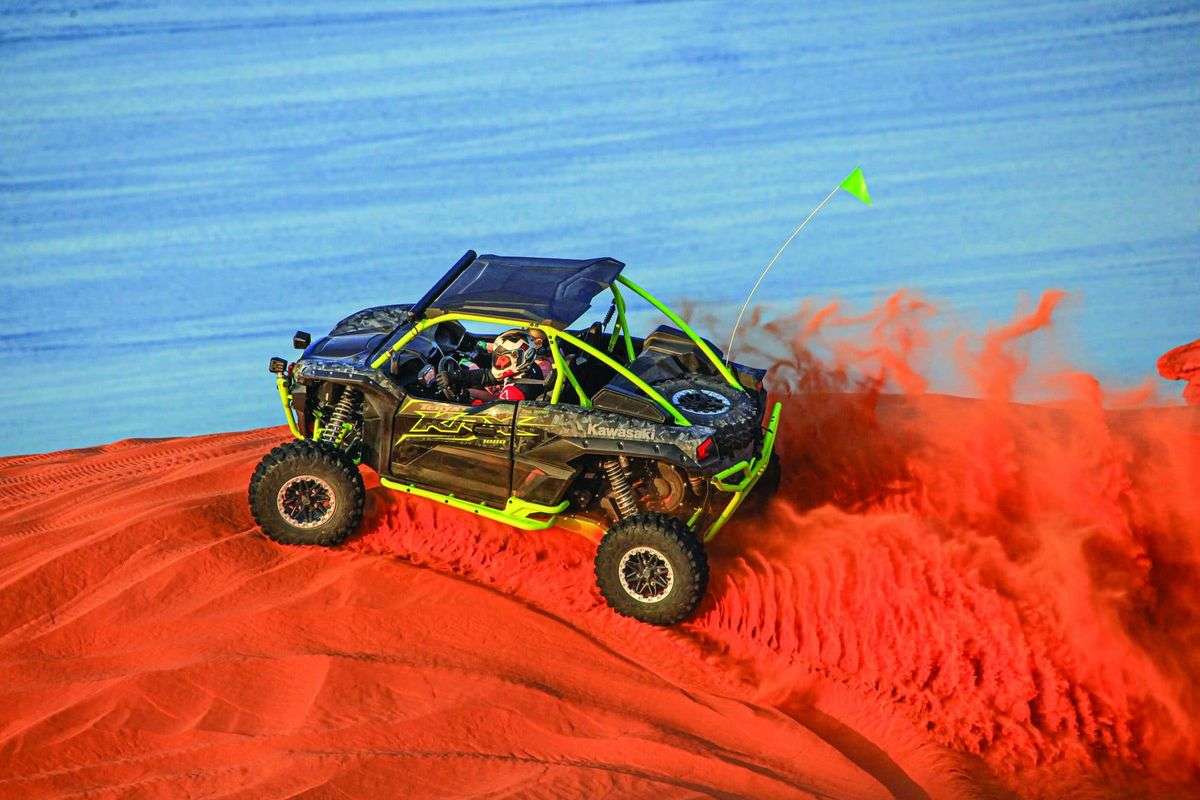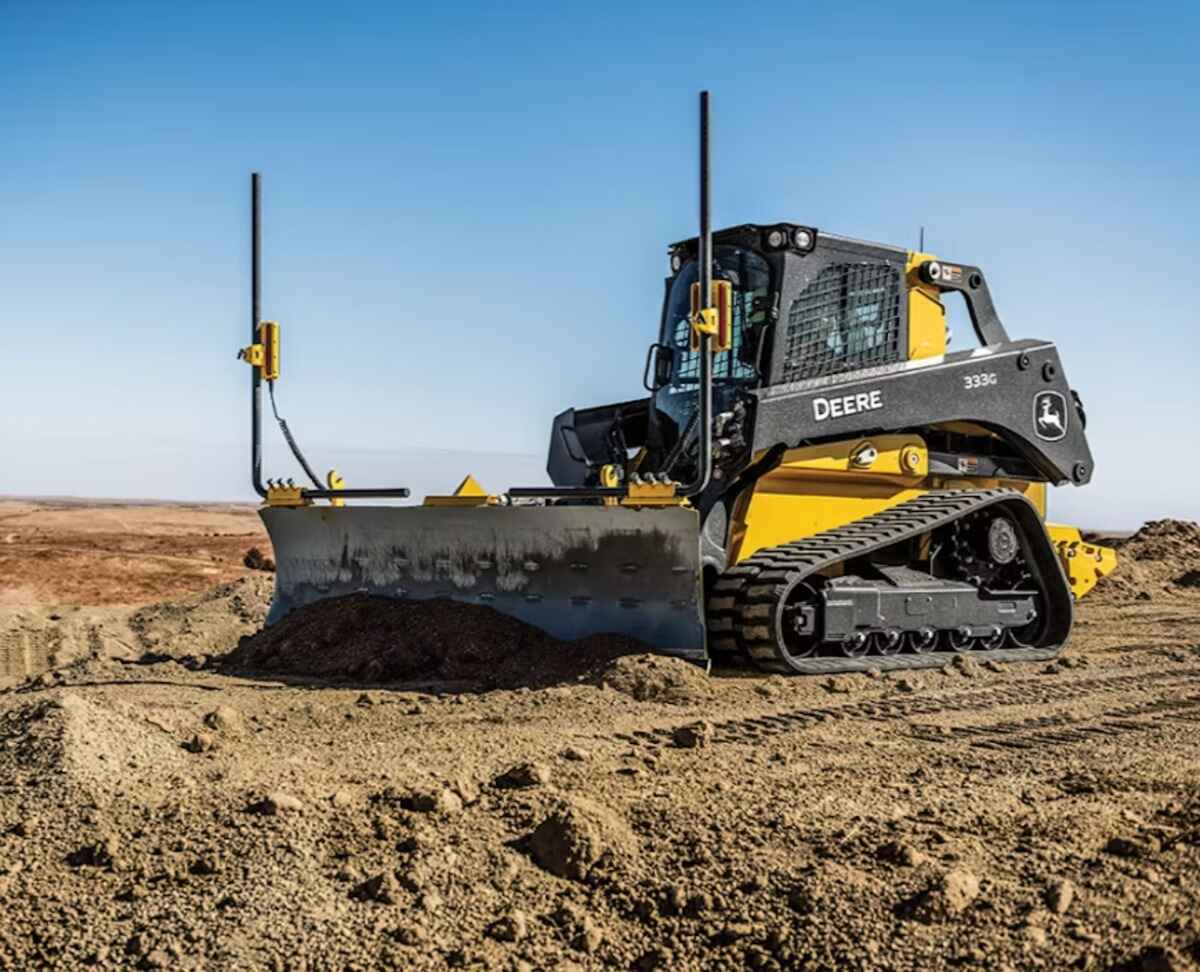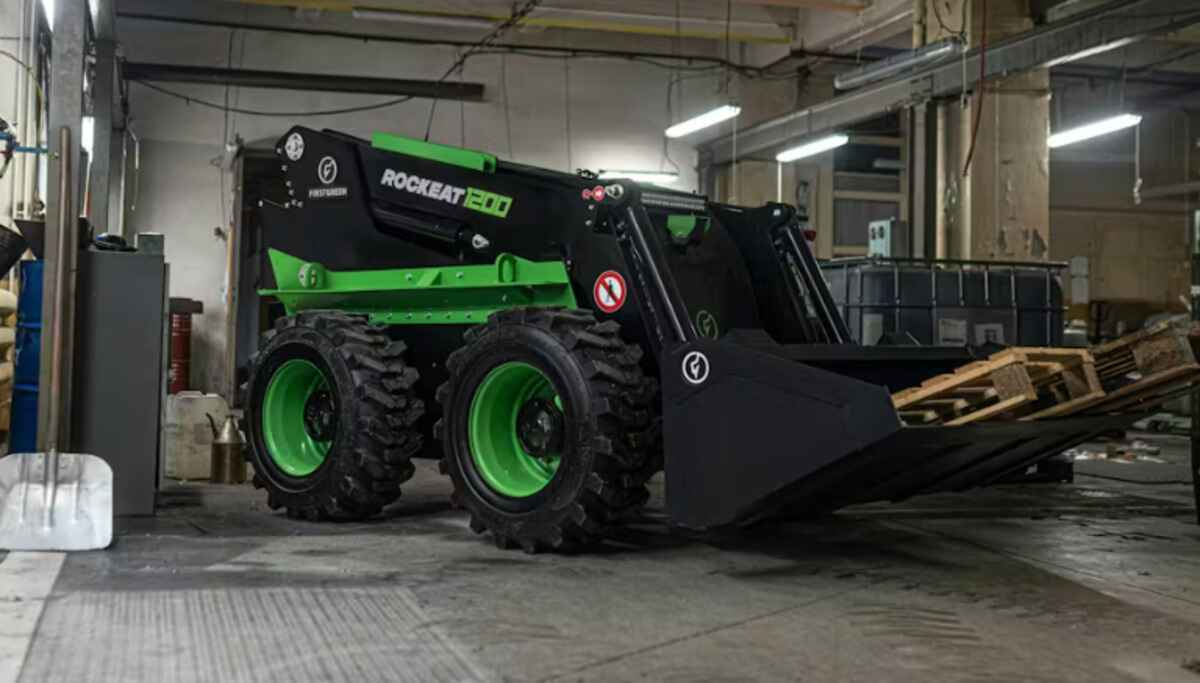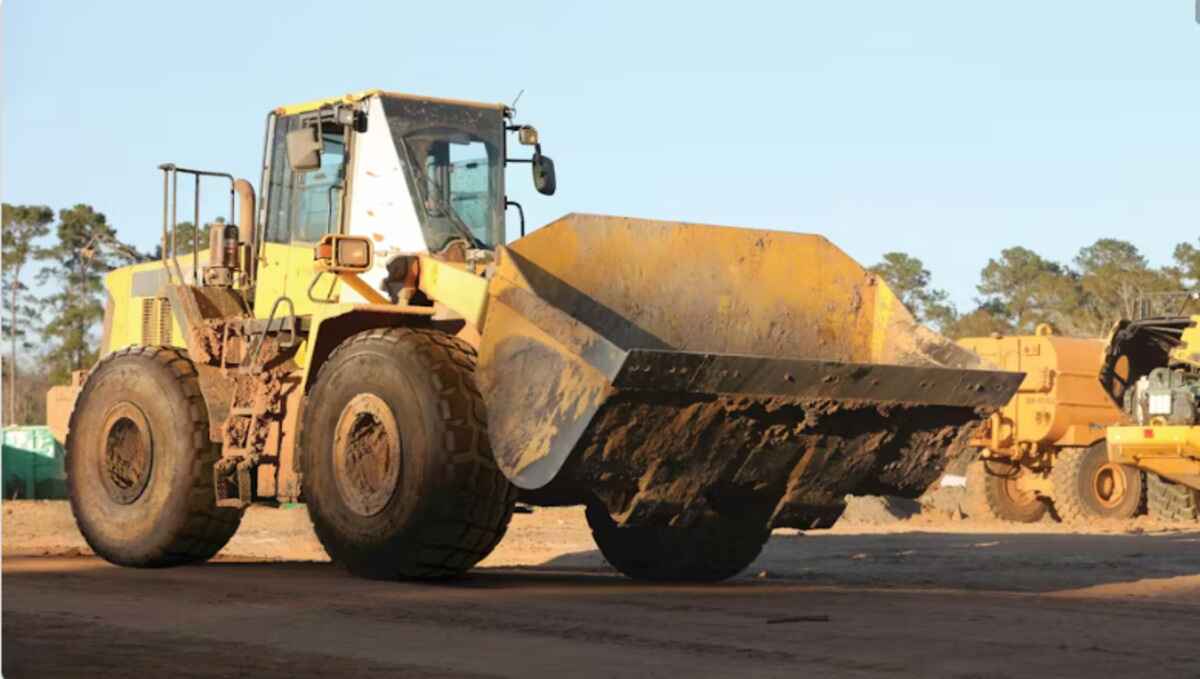2021 Kawasaki Teryx Krx 1000 Trail Edition

2021 KAWASAKI TERYX KRX 1000 TRAIL EDITION
In just one year since its introduction, the Kawasaki Teryx KRX 1000 has become a force in the market. There are a number of good reasons that it has quickly gained such acceptance.
First, it was building on the well-deserved reputation of the workhorse Teryx 800. The Teryx design has aged well, and it has an excellent performance and reliability history. Second, Kawasaki didn’t rush to the market but decided what segment it wanted to concentrate on.
In the end, the Teryx KRX 1000 was aimed right at the traditional Teryx trail-oriented customer, but one who craved greater performance, suspension comfort, and overall capability. In the past, if a Teryx 800 owner wanted a new level of performance, they modified the 800 or changed brands. Now, Kawasaki offers a big step up to the KRX with its high-performance, 999cc, parallel-twin, 68-inch track width, robust frame and suspension arms, and quality long-travel suspension.
2021 KAWASAKI TERYX KRX 1000 TRAIL EDITION
We have seen other brands almost immediately follow new models with major variations of the platform. Examples are, Honda with the four-seat Talon, or Yamaha with two- and four-seat variations introduced at the same time with the Wolverine RMAX2 and RMAX4. We had hoped that Kawasaki would do the same.
For 2021 Kawasaki has new models, but they are equipment packages rather than platform changes. The best equipped of these is the KRX 1000 Trail Edition. It is set apart visually by the grey camo bodywork and neon yellow-green suspension arms and cage tubing.
The same eye-searing color covers the front and rear bumpers and nerf bars that are features unique to this model.
It also has a Warn winch as standard equipment. Less visual are additional areas of skid protection, including the front A-arms. There is also a full roof.
In all, the differences cost the Trail Edition 120 pounds of added weight and approximately $2,500 compared to the standard machine. Ours was a bit heavier as we added the excellent Kawasaki spare tire that fits perfectly in the bed secured with a simple but bulletproof Y-shaped tie-strap, Kawasaki mirrors, and Lazer Star lighting. In terms of chassis or engine performance, there is no difference from the standard KRX.
2021 KAWASAKI TERYX KRX 1000 TRAIL EDITION
CHANGES IN THE WORLD
A year ago, after looking carefully at the parts and design of the KRX chassis and drivetrain, and knowing the quality of the Teryx 800, we predicted that the KRX 1000 would be a bulletproof performer.
Thankfully, a year’s experience has not tarnished that opinion. Areas that have good, technical trails were soon populated with KRX 1000s, and as the word got out, so were rental fleets. Together, the owners and rental agencies have proven what we suspected—the KRX is a serious, effective, reliable player in the trail market. We aren’t saying that it should be chained to slow, tech trails. The KRX 1000 is multi-talented—so far. Like all of the Japanese manufacturers, Kawasaki sees a turbo option as something for the aftermarket. The stock, normally aspirated Kawasaki handles dune-gooning just fine, but without a factory turbo option, it is unlikely that KRXs will attack dune areas like motorized lemmings.
Kawasaki chose to stay conventional with the KRX suspension. It has a four-link rear suspension with arched trailing arms and double A-arms in front. They are good for 18.6 inches of front travel and 21.1 inches of rear travel. Fox Podium LSC shocks have spring preload and 24-position compression damping adjustability. The shock bodies have a stainless steel sleeve to prevent the springs from wearing on them. Both ends have sway bars as well. After a year of experience with the KRX in a variety of situations, we remain fans of the suspension and chassis.
2021 KAWASAKI TERYX KRX 1000 TRAIL EDITION
MOTOR TALK
Even though the Teryx KRX 1000 has a larger and more powerful engine, Kawasaki went all out to make it as tough as the Teryx 800. We had the chance to handle and inspect all of the key engine and drivetrain parts, and they are impressively stout, while employing the latest high-performance, fuel-injected four-stroke technology.
Kawasaki also has a large and heavy-duty CVT that works in conjunction with a centrifugal clutch. The sheaves don’t open up and let the belt slip freely. The sides of the CVT belt are always engaged, so the centrifugal clutch allows smooth takeoffs. The clutch’s inner hub has six shoes faced with friction material. The shoes move outward with rpm and engage the inside surface of the clutch drum.
Machines with a centrifugal clutch like the KRX typically have very controllable low-rpm response and smooth engagement and takeoff. This is partly a result of the external clutch adding substantial additional rotating mass to the engine output shaft. Plus, there is no metal-pinching-rubber takeoff, but a predictable more-rpm, more-power-transfer that you see with friction-material-to-steel engagement. The engine’s power is delivered to a transmission with forward high, forward-low, neutral and reverse gears. There is no park in the transmission. Kawasaki feels it is safer and better for transmission life to use a handbrake, and we like it.
LIVING ROOM
Kawasaki paid attention to interior comfort, and it shows in the seat position and ample legroom. Tall doors have finished inner sides with built-in armrests that are comfortable where they contact your body. Inside and outside handles open the doors easily, and they close with a pleasant, automotive clunk. With the tall doors, even drivers over 6 feet tall feel safely contained. Both the driver and the passenger seats have 6 inches of fore and aft adjustability, and the car is roomy for drivers over 6 feet tall. The firm seats are comfortable and supportive. It is equipped with five cup holders. The differences between the standard KRX 1000 and the Trail Edition driver’s compartment are the neon-green cage bars and having a roof.
There is a large dash display with all the information we have come to expect, but with the addition of a welcome CVT temp bar graph. New for 2021 is a low-battery indicator light. We didn’t have a hint of belt trouble, and rarely looked at the belt temp.
2021 KAWASAKI TERYX KRX 1000 TRAIL EDITION
In keeping with the trail orientation of the KRX, it is equipped with a highly effective locking front differential and a low-power switch. We were skeptical about having less power, but soon grew to appreciate it in tough conditions. We accidentally bumped it to low power in the big sand dunes, and were startled until we realized the problem. Nevertheless, we typically employ it in rough, low-traction conditions. On steep, rocky climbs the car bounced and hopped on the full-power setting. We were struggling with smooth throttle inputs that were easy in low-power mode. This was true of hills so steep we thought we needed all of the power. We didn’t.
2021 KAWASAKI TERYX KRX 1000 TRAIL EDITION
DRIVE EVERYWHERE
Keep the KRX on technical trails—or any trails—and it is impressive. Kawasaki has taken pains to provide a basic suspension setting that can easily handle the rough while providing a good deal of comfort. Cabin occupants remain isolated from trail abuse. Between the seats and the suspension, it does a great job with comfort.
The overall setting is somewhat soft, and our spare-tire setup added to that feeling. Plus, at over 2000 pounds curb weight, regardless of whether you are on sand or dirt, the KRX responds best to smooth corner inputs. Toss it in and slam ruts, and it leans. We never lifted the inside wheels, but we consciously aimed not to.
During our technical rock-crawling trail experiences at Sand Hollow State Park in Utah, the KRX was spectacular. It allowed the driver and passenger to feel safe and confident on climbs, descents and cambers. The wheelbase is short enough to be nimble, and light steering effort makes it more than capable in the tight sections. It is long enough to keep the frights away on drops and steep climbs.
Engine performance feels effective with all the power we generally needed, but without the slammed-in-the-seat rush that other normally aspirated machines produce. We are sure the horsepower is there, but the weight is over 2000 pounds (with a winch, remember). A standard Polaris XP 1000 is under 1450, and the Honda Talon is around 1500 pounds.
Again, there is plenty of power to get any off-road job done. For example, it is amazingly quick through whoops with good stability and control. We only did small jumps, but, again, no sweat and a nice landing.
During the last year, we have had the KRX at three separate dune locations. There is nothing that the chassis and suspension won’t handle. It is wide enough for good control, and the stock Maxxis Carnivore tires do well. We did not try paddle tires, but no doubt they would have helped. That superbly smooth power that handles slippery, rocky, and root-filled trails so well feels tame in the dunes. You need to put your foot in it to exit turns. We don’t see the dunes as a primary location for KRX owners, though.
Kawasaki has the KRX limited to 67mph indicated (65mph actual). That is one trait that rental fleets appreciate. Honestly, we didn’t feel overly restricted by that number. It has all the power it needs to get to 65 mph and more, but the electronics don’t allow it to climb over that speed. The only other bother is the fuel gauge. It lies! When it showed almost empty, the 10.5-gallon tank accepted only 5.3 gallons! Reportedly, when the fuel warning light is flashing, you have 30 percent fuel left.
CONCLUSION
We spent a lot of time on desert trails and two-tracks, plenty of time on technical trails, and, of course, our dune outings. In every case, the KRX was fun, smooth, willing, and more than capable. Most important, it was absolutely comfortable and dead reliable. No hint of belt issues, and not a single mechanical hiccup. We checked tire pressure and the oil (a handy sight glass!) level and drove hard with a smile. We only used the winch to tip other brands so they could change tires. The KRX was literally (fuel gauge aside) flawless and a great value.
SPECIFICATIONS
KAWASAKI TERYX KRX 1000 TRAIL EDITION
MSRP $22,999
Engine type 999cc 4-valve, 4-stroke twin
Bore x stroke 95mm x 75.1mm
Fuel system DFI with two 50mm ETV throttle bodies
Fuel capacity 10.6 gallons
Starting system Electric
Final drive Shaft
Suspension/wheel travel:
Front Double wishbone w/ Fox 2.5 Podium LSC shocks with adjustable preload and 24-way compression damping/18.6”
Rear 4-link trailing-arm, Fox 2.5 Podium LSC shocks with adjustable preload and 24-way compression damping/21.1”
Tires:
Front 31×10 –15 Maxxis Carnivore
Rear 31×10 –15 Maxxis Carnivore
Brakes:
Front Dual hydraulic disc w/ 2-piston calipers
Rear Hydraulic disc w/ 1-piston calipers
Lenght/width/height 133.3”/68.1”/76.6”
Wheelbase 98.8”
Ground clearance 14.4”
Cargo capacity 351 lb.
Towing Capacity NA lb.
Curb weight 2020 lb. (2022 lb. CA)
Color Fragment Camo Grey
Source: https://dirtwheelsmag.com/first-ride-2021-kawasaki-teryx-krx-1000-trail-edition/




